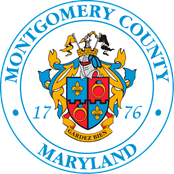Montgomery County, Maryland Información en español

Press Releases - County Council
Councilmembers introduce zoning proposal to legalize small-scale equipment for 5g wireless - Riemer, Albornoz and Rice call next generation wireless infrastructure “an economic development imperative”
For Immediate Release: Monday, September 30, 2019
ROCKVILLE, Md., Sept. 30, 2019—On Tuesday, October 1 three Councilmembers will introduce a zoning text amendment, ZTA 19-07, that prescribes new rules for the siting of wireless facilities in the County’s residential zones. The measure, sponsored by Councilmembers Hans Riemer, Gabe Albornoz and Craig Rice, aims to allow the deployment of next-generation wireless infrastructure, which will offer faster speeds, enhanced reliability and much greater capacity.
“The next generation of wireless technology will be profoundly more powerful than what we all use today,” said Riemer. “The opportunities for innovation and advancement in health care, education, transportation, agriculture, entertainment and many other sectors cannot be understated. I want Montgomery County residents and businesses to have access to next-generation wireless technology, but the County’s current zoning code effectively prohibits this technology in residential areas. This zoning change will fix that by enabling the deployment essential to supporting our tech devices both at home and in the workplace.”
“Connecting our County through the next generation of wireless technology will make our lives better in so many ways,” said Albornoz. “Imagine if a firefighter could be guided through a burning building by viewing the building layout in their helmet, or a paramedic treating a patient in an ambulance could be guided by a doctor miles away. This is the future, and we need to prepare for it by laying the foundation. This ZTA will get us there.”
“This ZTA is a step in the right direction for all County residents,” said Rice. “The tech industry is moving towards 5g wireless because they realize the evolution of technology has dramatically increased the number of high data users in our nation and throughout the world. Here in the County, we are seeing the increasing demand for stronger and more reliable signal service from our average tech user and especially from our small business owners located in residential areas and our budding entrepreneurs. ZTA 19-07 meets their needs, boosting their potential and consequently supporting local economic development.”
Current and future wireless networks will increasingly take advantage of millimeter wave spectrum above 24ghz, which means that they can carry a lot of information (every wobble of the wave can carry data) but they won’t travel very far. Thus, the technology requires many antennas that are closer to the device. While today’s technology relies on relatively few but tall macro towers, tomorrow’s technology will also make use of antennas on utility poles and streetlights. The problem is that Montgomery County’s zoning code does not allow these new wireless facilities in residential areas, where people also use their devices at home.
Accordingly, ZTA 19-07 does the following:
- Allows wireless facilities on poles in the public right-of-way by “limited use” when those antennas are set back at least 60 feet from the nearest building, plus numerous other screening, color, and size/height conditions.
- Allows wireless facilities on poles in the public right-of-way by “conditional use” when those antennas are between 30-60 feet from the nearest building, plus numerous other screening, color, and size/height conditions.
- Does not allow antennas on poles that are closer than 30 feet to the nearest building.
- Revises the conditional use process to comply with federal law by
- affixing deadlines to all steps in the process to meet federal shot clocks.
- requiring that the hearing examiner’s inquiry must determine the least visually obstructive location when ensuring provision of service.
- allowing the batching of applications.
- directing that appeals of the hearing examiner’s decisions go straight to the Circuit Court.
The impact of this proposal is that the industry is incentivized to use poles that are 60 feet or more from a building. When the setback distance is between 60 to 30 feet, residents will continue to have a voice in the process to argue that there are less obtrusive locations. No equipment will be allowed closer than 30 feet to a house or other habitable building.
The previous Council took these issues up in 2018 and passed ZTA 18-02. Then-Council President Riemer was the lead sponsor of this zoning change that allowed deployment of wireless facilities in mixed-use and non-residential zones. The previous Council also reviewed a residentially-focused ZTA in the fall of 2018, but Riemer did not bring the issue to a final vote because consensus on the measure was not reached.
Riemer added, “This new zoning measure also aims to disrupt efforts in the Maryland General Assembly and at the Federal Communications Commission to remove the County’s authority to control how these facilities are deployed. The County is fighting those preemption efforts, not by opposing next-generation wireless technology, but by arguing that we should retain local control over deployment because we can do a better job for our residents. This zoning change would exercise the local authority that we are fighting to protect. Our own standards are more protective of local concerns than the industry-supported proposals in the state or federal government.”
Riemer serves on the FCC Intergovernmental Advisory Committee (IAC) and as a member of the Telecommunications & Technology Steering Committee at the National Association of Counties (NACo). He has sponsored numerous resolutions and advisory recommendations as a member of these organizations and has advocated forcefully against federal preemption because the best and fastest deployment will only happen if local governments have a real seat at the table.
A public hearing for ZTA 19-07 will be scheduled at a later date. Read more about ZTA 19-07 here. Give us your feedback on social media using #MoCoWireless.
# # #
Release ID: 19-314Media Contact: Ken Silverman 240-777-7964